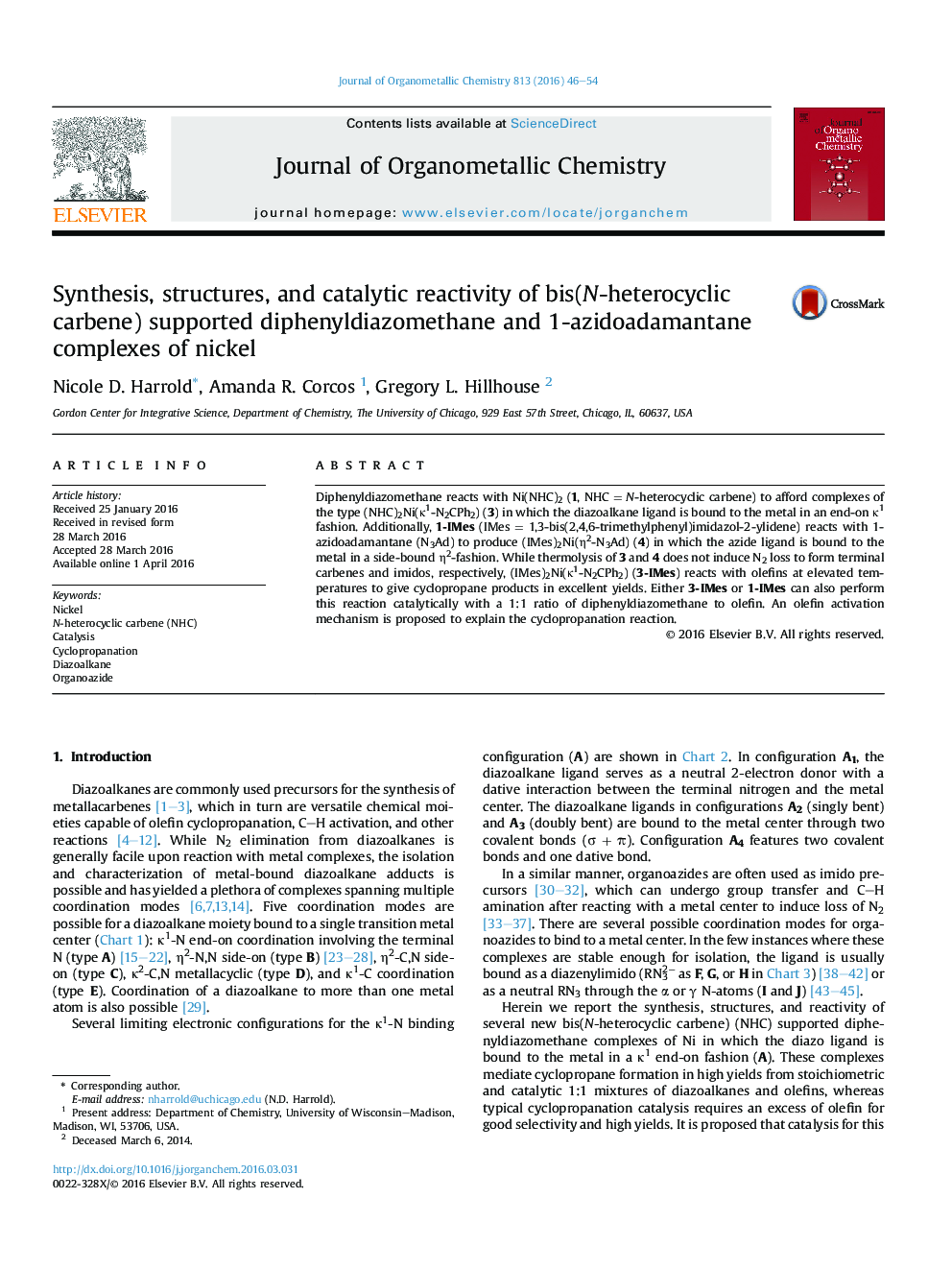| Article ID | Journal | Published Year | Pages | File Type |
|---|---|---|---|---|
| 1321747 | Journal of Organometallic Chemistry | 2016 | 9 Pages |
•Family of bis(N-heterocyclic carbene)-supported Ni complexes bind N2CPh2 and N3Ad.•Unique binding modes for N2CPh2 and N3Ad have rarely been observed in group 10 metals.•Catalytic cyclopropanation with NiN2CPh2 complexes is efficient and high yielding.•The proposed catalytic cycle does not include formation of a metallacarbene.
Diphenyldiazomethane reacts with Ni(NHC)2 (1, NHC = N-heterocyclic carbene) to afford complexes of the type (NHC)2Ni(κ1-N2CPh2) (3) in which the diazoalkane ligand is bound to the metal in an end-on κ1 fashion. Additionally, 1-IMes (IMes = 1,3-bis(2,4,6-trimethylphenyl)imidazol-2-ylidene) reacts with 1-azidoadamantane (N3Ad) to produce (IMes)2Ni(η2-N3Ad) (4) in which the azide ligand is bound to the metal in a side-bound η2-fashion. While thermolysis of 3 and 4 does not induce N2 loss to form terminal carbenes and imidos, respectively, (IMes)2Ni(κ1-N2CPh2) (3-IMes) reacts with olefins at elevated temperatures to give cyclopropane products in excellent yields. Either 3-IMes or 1-IMes can also perform this reaction catalytically with a 1:1 ratio of diphenyldiazomethane to olefin. An olefin activation mechanism is proposed to explain the cyclopropanation reaction.
Graphical abstractComplexes of type (NHC)2Ni(κ1-N2CPh2) (3), in which diphenyldiazomethane is bound to an N-heterocyclic carbene-supported nickel center in an unusual κ1 end-on fashion, react with olefins at elevated temperatures to give cyclopropane products in excellent yields. 3-IMes or 1-IMes can also perform this reaction catalytically with an efficient 1:1 ratio of diphenyldiazomethane to olefin.Figure optionsDownload full-size imageDownload as PowerPoint slide
